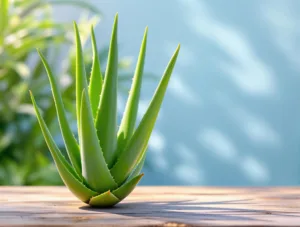Dry Body Brushing: The Ancient Beauty Secret for Radiant Skin and Detoxification
Introduction
In the pursuit of glowing skin and optimal health, many turn to expensive creams, rigorous diets, or high-tech treatments. However, one of the most effective and time-tested beauty rituals is surprisingly simple and affordable: dry body brushing. This centuries-old practice, rooted in Ayurvedic and traditional Chinese medicine, involves gently brushing the skin with a natural bristle brush to exfoliate, stimulate circulation, and promote detoxification.
Beyond its immediate benefits for skin texture, dry body brushing is celebrated for its ability to enhance lymphatic drainage, reduce cellulite, and improve overall well-being. In this comprehensive guide, we’ll explore the origins of dry body brushing, its scientifically backed benefits, step-by-step instructions for proper technique, and expert tips to maximize results. Whether you’re a skincare enthusiast or a wellness seeker, incorporating this ritual into your routine could be the missing key to unlocking your most radiant self.
The Origins and Science Behind Dry Body Brushing
A Historical Perspective
Dry body brushing has been practiced for centuries in various cultures. Ayurveda, India’s 5,000-year-old holistic healing system, refers to it as “Garshana”—a method of stimulating the body’s energy flow and removing toxins. Similarly, ancient Greeks and Romans used strigils (curved tools) to scrape sweat and impurities from their skin after exercise.
How It Works: The Science of Skin and Lymphatic Stimulation
The skin is the body’s largest organ and a crucial player in detoxification. Dry brushing works by:
- Exfoliating Dead Skin Cells – The bristles slough off dry, flaky skin, promoting cell turnover and a smoother texture.
- Stimulating Blood Circulation – The gentle pressure increases blood flow, delivering oxygen and nutrients to skin cells.
- Enhancing Lymphatic Drainage – The lymphatic system, responsible for removing waste and toxins, lacks a pump (unlike the circulatory system, which has the heart). Dry brushing helps move lymph fluid, reducing puffiness and supporting immunity.
A 2009 study published in Medical Hypotheses suggested that mechanical stimulation of the skin (like dry brushing) could improve lymphatic function, though more research is needed to confirm its full effects.
The Remarkable Benefits of Dry Body Brushing
1. Exfoliation for Smoother, Softer Skin
Regular dry brushing removes dead skin cells, preventing clogged pores and allowing moisturizers to penetrate deeper. Unlike harsh scrubs, it’s gentle yet effective.
Tip: Follow up with a nourishing oil (like coconut or jojoba) to lock in moisture.
2. Enhanced Circulation and a Healthy Glow
The massaging motion boosts blood flow, which can lead to brighter, more even-toned skin. Some users report a natural “post-brush glow” similar to light exercise.
3. Lymphatic Support and Detoxification
By encouraging lymphatic drainage, dry brushing may help reduce swelling, flush out toxins, and even lessen the appearance of cellulite.
Note: While dry brushing can temporarily improve cellulite by plumping the skin, it’s not a permanent cure—consistent use is key.
4. Reduction in Ingrown Hairs
Exfoliating before shaving or waxing helps prevent ingrown hairs by clearing away dead skin that can trap hair follicles.
5. Stress Relief and Invigorating Energy
The rhythmic strokes can be meditative, offering a moment of mindfulness while awakening the senses—ideal for morning routines.
How to Dry Brush Correctly: A Step-by-Step Guide
Choosing the Right Brush
Opt for a natural bristle brush (like boar or cactus fiber) with a long handle for hard-to-reach areas. Synthetic brushes may be too harsh.
Step 1: Brush on Dry Skin Before Showering
Always dry brush on completely dry skin, preferably in the morning (to energize) or before a bath (to wash away exfoliated cells).
Step 2: Use Gentle, Upward Strokes
- Start at the feet and move upward toward the heart (following lymphatic flow).
- Use long, sweeping motions on limbs and circular motions on joints (knees, elbows).
- Brush the abdomen in a clockwise direction to support digestion.
- Avoid sensitive areas (face, broken skin, or varicose veins).
Step 3: Shower and Moisturize
Rinse off in a warm (not hot) shower, then apply a hydrating body oil or lotion.
Step 4: Clean Your Brush
Wash the brush with mild soap weekly and let it air dry to prevent bacteria buildup.
Frequency: 2-3 times per week for best results. Over-brushing can cause irritation.
Common Mistakes to Avoid
- Brushing Too Hard – This can cause micro-tears. Use light pressure—your skin should be pink, not red.
- Skipping Hydration – Always moisturize post-brush to replenish the skin.
- Using on Broken or Inflamed Skin – Avoid active acne, rashes, or sunburns.
- Brushing After Shaving/Waxing – Wait at least 24 hours to prevent irritation.
Final Thoughts: Is Dry Body Brushing Worth It?
Dry body brushing is a simple, cost-effective addition to any self-care routine, offering both aesthetic and wellness benefits. While it’s not a miracle cure for cellulite or deep-rooted toxins, its ability to exfoliate, boost circulation, and promote lymphatic health makes it a worthwhile practice for glowing skin and a refreshed feeling.
For optimal results, pair dry brushing with hydration, a balanced diet, and regular exercise. Like any wellness ritual, consistency is key—give it a few weeks, and you may just find yourself hooked on this ancient beauty secret.
Ready to glow? Grab a brush, start gently, and let your skin reap the rewards.
Would you like any modifications or additional details on a specific aspect?









Add comment